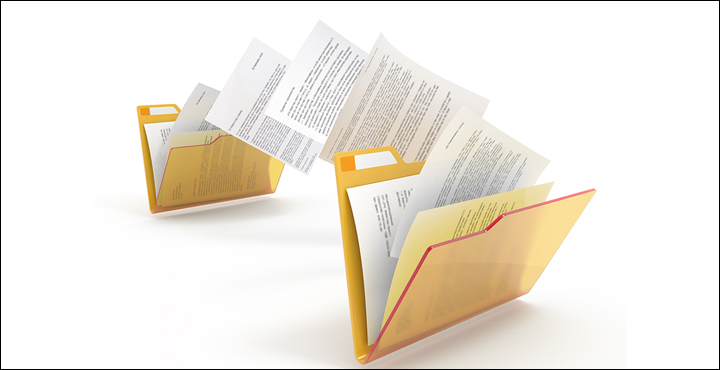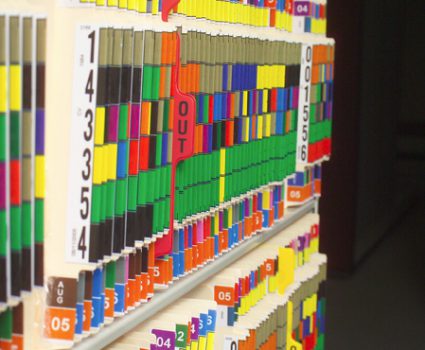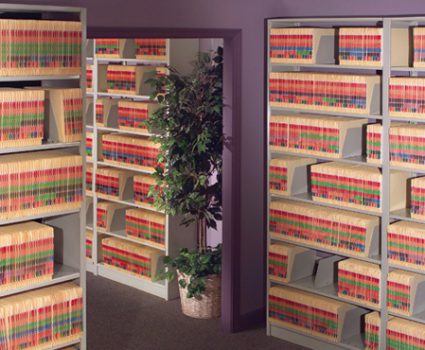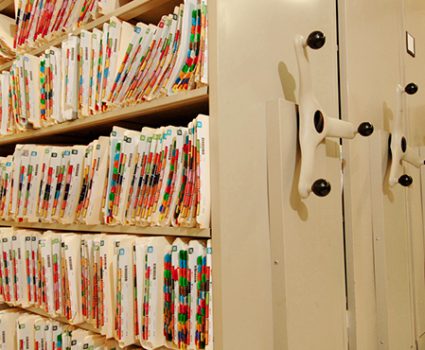
How to Plan a Centralized File Collection – Part 1
One of the most common questions in records management is whether to store records in multiple locations or in a single, centralized file room.
Centralizing records has many benefits, but whether it is the right move depends on your organization and the specific needs of your team. If you have explored the pros and cons and are ready to move forward with centralization, our three part blog post offers tips and techniques to make your centralization project a success.
In three blog posts, we will look at the key aspects of centralization:
- File consolidation and conversion
- Space planning and storage design
- Centralizing control: file retrieval and sign-out procedures
Consolidation: bring it all together
Consistency is a must if a consolidated collection is going to work well.
Before you establish the common system, you need to start by understanding what works today. This means conducting an audit of the existing storage practices currently in use across the department:
File Enclosure Formats
There are so many possible variations when you look at file folders:
- Is the folder legal or letter sized?
- Where is the tab located?
- Are there divider tabs, fasteners, pockets or any other special folder constructions?
As you take stock of the existing formats, think about which features will best meet the needs of team in a centralized system. The folder format you chose should take into account your priorities. Are you low on space? Need more security?
File Label Definitions
File labels are a key factor in efficient, reliable information retrieval. Files need to be labeled according to a standardized descriptor, such as name, number or a consistent combination of identifiers. If subsets of files within a collection are labeled with different identifiers or combinations, then users will need to check multiple sections, slowing down retrieval. It is even possible that some files would be missed entirely when users who are less familiar with the piecemeal label system are attempting to retrieve files. If you find many different identification schemes in place, you should consider converting all files into a new standard that meets everyone’s needs.
Internal File Arrangements
There is more to file arrangement than just how they are ordered on the shelf. The internal file arrangement is just as important. Are the individual documents arranged chronologically? Reverse chronological with the most recent items on top? Are there special tabs or are documents arranged by business process or document type? When planning the centralized file room, you need to ensure that you don’t disrupt operations by changing these existing systems unnecessarily. If you do alter the status quo, the new system needs to be clearly communicated to users so that locating documents within files continues to be efficient and reliable.
By exploring the factors above, you will be able to design a suitable filing standard for the centralized collection. In next week’s blog post we will explore the factors to consider when planning space and storage in centralized filing system.
Next Steps
- Can’t wait for next week’s blog post? Read our white paper: Strategies in Centralized Filing.
- Get one of our experts to help you with your record centralization project.





